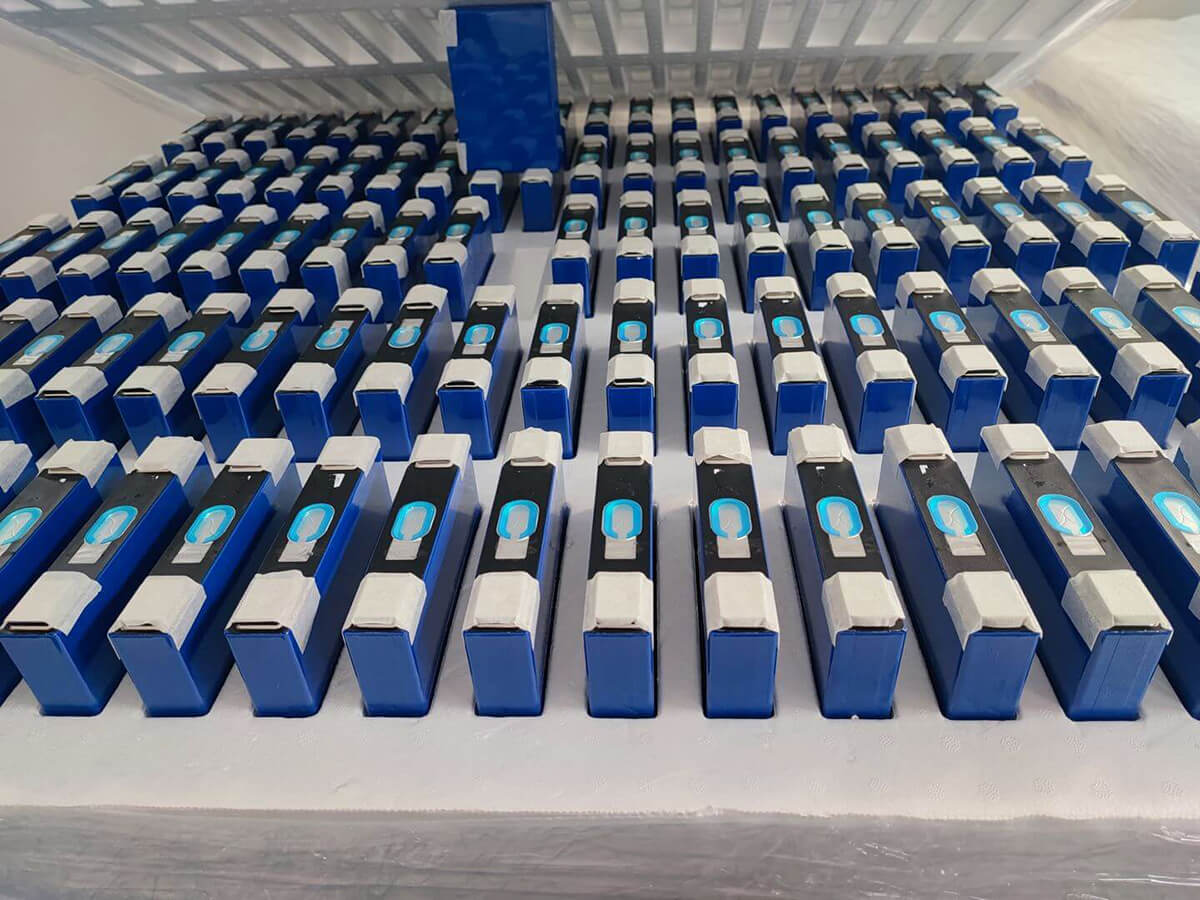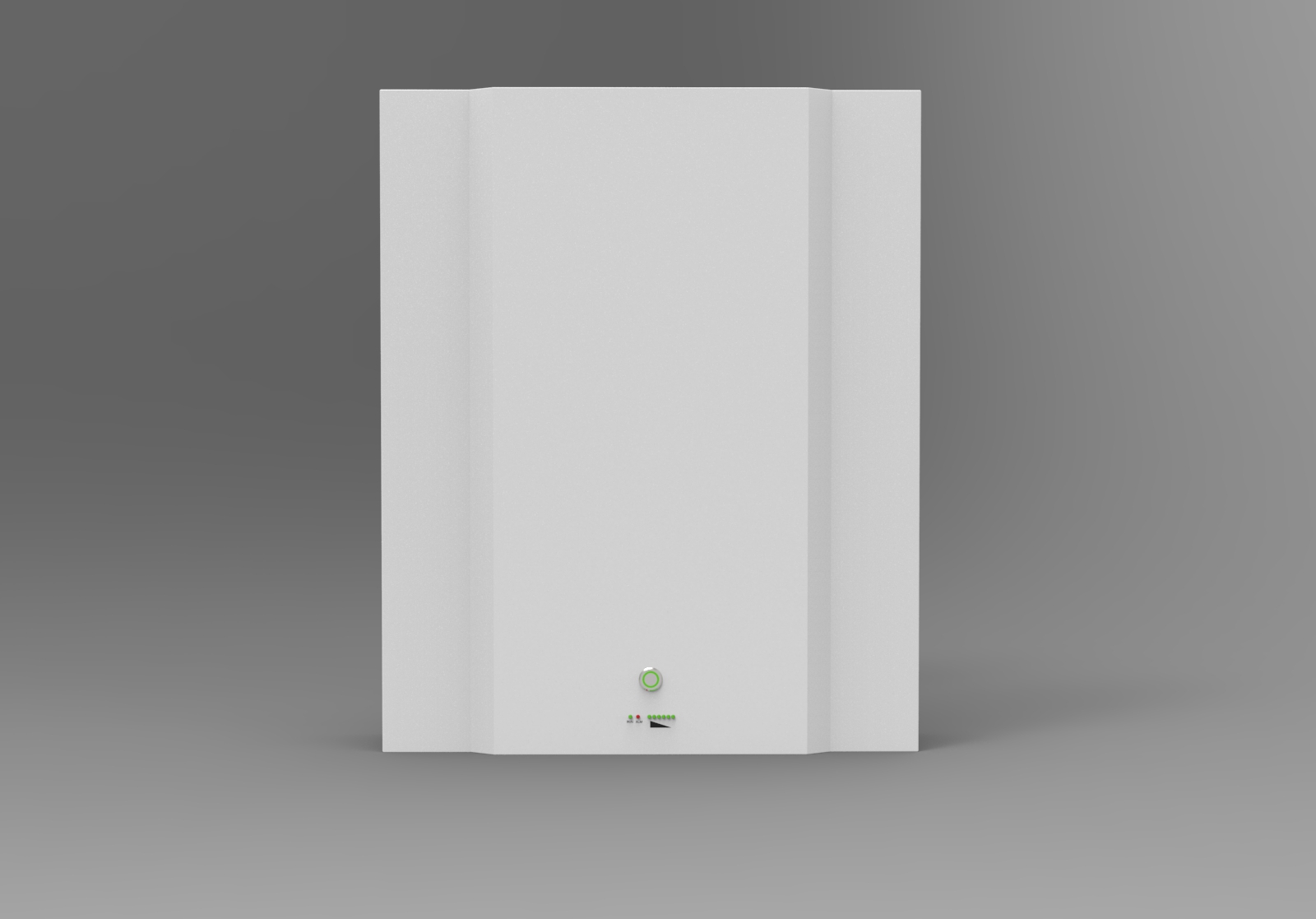4 Key Points To Master How To Store Lifepo4 Batteries

With the improvement of living standards, people's demand for electricity is increasing, and lifepo4 batteries are deeply loved by everyone because of their super performance, high safety, and long life. However, many people damage lifepo4 batteries in advance due to improper storage, which greatly increases the cost of use.
For those who are looking to store their Lifepo4 batteries safely and securely, this article has all you need to know. We’ll take you through the ins and outs of storing these powerful lithium-ion cells, so you can rest assured that your battery is in good hands. From temperature control to maintenance tips, we’ve got it all covered.
So if you want to get the most out of your Lifepo4 battery and keep it running optimally for years to come, then look no further - we’ve got the answers! Let’s dive in and explore what it takes to store lithium-ion batteries correctly and safely.
Why is It Important to Store Lifepo4 Batteries Correctly?
LFP batteries are still an expensive investment for many people, most people are currently used them for the needs of specific seasons and special situations (blackouts, travel).
However, when the lifepo4 battery is idle, the internal balance will change with time and environmental changes, resulting in limited battery performance, reduced battery life, and a waste of your investment.
Therefore, properly storing Lifepo4 batteries is an essential and important measure.
4 Key Points About Lifepo4 Battery Storage
Point 1: Lifepo4 Storage Time Length
Since long-term storage will lead to the passivation of battery activity and accelerate the self-discharge rate, different lifepo4 battery storage temperatures and environments should be adopted according to the length of storage time.
- Recommended storage temperature: -5 to +35°C (23 to 95°F)
- Up to 1 month storage: -20 to +60°C (4 to 140°F)
- Up to 3 months storage: -10 to +35°C (14 to 95°F)
- Extended storage: +15 to +35°C (59 to 95°F)
Extra Tips: First, you'll want to maintain a storage level of no less than 25% and no more than 85%. This will help ensure that the battery maintains its capacity. Second, be sure to keep the storage voltage at or below 3.65V/cell for long-term storage and below 3.90V/cell for short-term storage. This ensures that the battery does not overcharge and damage itself. Finally, if you have long-term lifepo4 storage needs, please cycle the battery at least once every 3-6 months, perform deep charge and discharge, and do not store a dead battery.

Point 2: Lifepo4 Storage Season
Some people use batteries for camping in summer, and some people use them for different purposes such as heating in winter, so it is inevitable that they need to be stored for a long time in the remaining seasons.
- Summer storage:
Due to the high temperature in summer, the self-discharge rate of lithium iron phosphate batteries will be relatively high, about 3-4% per month. Although the lfp battery is a high-temperature resistant battery, it is best not to place it in a place that is too hot. An indoor room that is about the same temperature as a room temperature is the best choice.
- Winter storage:
The temperature in winter is low, and it can reach -20°C in some areas. Since the battery is actually a chemical reaction, the self-discharge rate of the battery will be relatively low in winter, about 2-3% per month. However, it should be noted that when storing lifepo4 batteries in winter, it is best to ensure that the lifepo4 storage temperature is higher than at room temperature.
If the area is in an environment of -20°C in winter, it is recommended to select a specific low-temperature LFP battery, which can effectively resist the impact of low temperature on the battery, so as to obtain good lifepo4 storage and use.


Point 3: External Environment Of Lifepo4 Storage
With careful consideration and proper planning, the storage environment of a LiFePO4 battery can be optimized for peak performance and longevity.
Firstly, the temperature should remain constant and moderate. Hot or cold temperatures can cause permanent damage to the cells and reduce their life cycle. A storage environment between 10°C and 25°C is ideal for LiFePO4 batteries, with a maximum spike of 40°C. On the other hand, a temperature lower than 0°C may cause irreversible damage.
Secondly, make sure your LiFePO4 battery is stored in a dry environment. Moisture can degrade cell performance and lead to corrosion on metal terminals. It is also important to ensure that no dust or debris enters the battery compartment as this can cause short circuits which damage cells over time. For best results, store your LiFePO4 battery in its original packaging with the lid firmly secured shut.
Finally, it's wise to keep your LiFePO4 battery away from electronic devices such as laptops or phones as these may produce interference that can decrease cell performance. Furthermore, if storing multiple batteries together, keep them at least 5 cm apart to prevent any potential contact between cells that could lead to short circuits or dangerous overheating situations.
Extra Tips: The battery with a BMS system can monitor and protect the battery when the lifepo4 battery storage or use.
Point 4: Disconnect Before The Lifepo4 Battery Storage
Harveypower lifepo4 battery packs have a master switch so that the user can easily turn off the battery. But just turning off the main switch is not enough, please disconnect the battery terminal cable before storing the lifepo4 battery to ensure that the battery is completely turned off and disconnected from the power source.
This is because certain components, such as sensors, are often designed to bypass the main disconnect switch. Therefore, when you store batteries, be sure to disconnect the battery's positive and negative wires.
By doing this, you can ensure it will not run low during lifepo4 storage and will always be ready for use. Last but not least, you should always make sure to only use the right lifepo4 chargers.

How To Store Lifepo4 With The System
To store a lifepo4 battery in a system, you should always ensure that the battery is charged to at least 30% when stored. This allows fast charging when needed and supports the operation of the BMS to prevent any damage due to low voltage conditions, allowing the system to be regularly monitored to ensure battery health.
Beyond that, you should also avoid leaving the battery plugged in for extended periods of time, as this can significantly shorten its lifespan.
If lifepo4 without bms, the battery status change during storage cannot be monitored in time, please be sure to check it yourself regularly.
How Lifepo4 Stores In Cold Weather
When it comes to the safe storage and maintenance of lifepo4 batteries, cold weather can pose a unique challenge. LIFEPO4 battery cells are particularly sensitive to extreme temperatures, so proper storage is essential for maintaining their safety and performance. With the right steps taken, you can ensure that your LIFEPO4 batteries stay in top condition even when temperatures drop.
Here are some tips for storing LIFEPO4 batteries in cold weather:
Prepare the Battery
Before placing your LIFEPO4 battery in cold storage, make sure that it is fully charged or at least has enough charge to withstand the low temperature. This will help prevent any damage caused by deep discharging due to the cold temperatures. Also, if possible, store your battery in an insulated box or container as this will help maintain a more stable temperature and environment.
Monitor Temperature
Storing LIFEPO4 batteries in an area with temperatures below 0 degrees Celsius can cause permanent damage. To avoid this, monitor the temperature of the area where you’re storing your battery and make sure it does not drop too low. Keeping a thermometer nearby is also helpful for checking conditions at any given time.
Keep It Charged
Even when stored in cold temperatures, it’s important to keep your LIFEPO4 batteries charged on a regular basis to offset any power loss due to self-discharge. Make sure you charge your battery regularly according to its manufacturer’s instructions and check its voltage level before use after periods of storage.
To sum up, taking precautions such as preparing and charging the battery before storing it, monitoring temperature levels during storage, and keeping it charged regularly will ensure that your LIFEPO4 batteries remain safe and perform optimally even in cold weather conditions.

Risks Of Not Charging Before Lifepo4 Storage
If you don't charge the battery before storing it, there are several risks associated with Lifepo4 batteries. Firstly, if a battery is stored without being fully charged, it will discharge and may end up entirely drained. This can cause permanent damage to the cell and render it unusable. Secondly, when a Lifepo4 battery is not charged before storage, sulfation can occur. Sulfation is a process by which lead sulfate crystals form on the anode of the cell and reduce its capacity for storing energy. This reduces the lifespan of the battery significantly.
For these reasons, it is important to always charge your Lifepo4 battery before storing it. Charging your LiFePO4 batteries regularly will ensure that they stay in good condition and perform optimally for years to come. Properly charging your LiFePo4 batteries also helps to reduce safety risks associated with improper storage or usage of the battery. Taking these preventative measures will ultimately give you more control over how long your LiFePo4 can last and help maximize its lifespan.
The above are the points that need to be considered when using lifepo4 batteries for personal use. For lifepo4 battery factories/suppliers/underwriters, when storing lifepo4 batteries in large quantities, they need to pay more attention to protecting the integrity of their performance and storage safety issues.
Below I will list 15 points that need to be paid attention to when storing lifepo4 batteries in factory warehouses.
15 Measures For Factory Lifepo4 Storage
- The single battery bank should be set independently. Set up eye-catching signs of "No Fireworks" at the storage place, and it is strictly forbidden to pile up flammable and explosive materials around.
- The temperature of the cell or storage battery warehouse is controlled at 20±5°C, the highest not exceeding 30°C, and the relative humidity not greater than 75%. Keep the warehouse clean, dry and ventilated, and do not store other items.
- Smoke and temperature alarm devices should be installed in the cell or storage battery warehouse, and the alarm signal should be sent to a 24-hour manned place.
- The cell or battery bank should be equipped with an independent external emergency exhaust device. The accident exhaust device shall be interlocked with the smoke and temperature alarm devices.
- Server rack batteries and stackable batteries should be placed neatly and not stacked too high. Storage facilities should use non-combustible materials and take anti-static measures.
- The positive and negative poles of each battery (cell) must be insulated to prevent short-circuit protection.
- The battery warehouse should be equipped with automatic sprinkler facilities.
- The battery cannot be stored at full power, it is recommended to store it with 40%-70% power.
- Semi-finished batteries should be equipped with protective plates.
- Waste batteries should be stored separately after discharge.
- Each fire compartment of the battery and cell warehouse shall not exceed 250 square meters.
- A sufficient number of spherical dry powder automatic fire extinguishers or sprinklers should be hung in the battery and cell warehouses.
- The storage battery and the cell storage are each equipped with 2 fire blankets and 1 special barrel for handling accident batteries.
- The battery bank and aging room should use explosion-proof electrical equipment.
- Faulty batteries and waste batteries must be placed in a special disposal cabinet for isolation and disposal. It is recommended to use explosion-proof sand buckets to dispose of accidental batteries.
In addition to storing lifepo4 batteries properly, there are also many maintenance measures in our daily use that can help effectively prolong the service life of the battery. This is the only way for you to maximize the use of lifepo4 batteries other than the battery performance determined by the production technology.
Other Maintenance Measures for Lifepo4 Batteries
Charge/Discharge The Batteries Correctly
- Avoid deep discharge
- Avoid overcharging
- Avoid long-term power loss
- Avoid long-term inapplicability
Proper terminal mount
Opting for the proper terminal mount is crucial for your lithium iron phosphate batteries. However, if you are unsure which terminal mount is perfect for your cells, you can check with your manufacturer for more information.
Clean your terminals before installation
The terminals on top of the batteries are made from aluminum and copper, which over time builds up an oxide layer when exposed to air. Before installing your cell interconnectors and BMS modules, clean the battery terminals thoroughly with a wire brush to remove oxidation.
If you want to know more about the factors that affect battery life and how to maintain the battery, please check the article "How long does a lifepo4 battery last?"

Conclusion
Proper storage of Lifepo4 batteries is critical. Otherwise, it will not only reduce its performance and life, but also cause danger. There are four key points to follow for Lifepo4 battery storage: storage time, storage temperature, storage environment, and how to store it with the system. To ensure optimum performance and safety, it is important to charge the battery before storing it. Additionally, regular maintenance is essential to prolong the life of Li-ion batteries.
Unfortunately, many people do not understand the importance of storing Lifepo4 batteries properly. Ironically, they often don't realize the risks associated with improper storage until it's too late. My advice? Don't take shortcuts when it comes to properly storing your Lifepo4 batteries! Taking the time to get things right will save you a lot of time and money in the long run.
All in all, proper storage of Lifepo4 batteries should be taken seriously - not only for optimum performance and longevity, but also for safety reasons. Follow these guidelines and your battery should last a long time!
More FAQ
1. Should solar lifepo4 batteries be placed outdoors or indoors?
It depends on the type of battery and the conditions of the installation site. However, an outdoor installation is preferred as it allows for better ventilation, reduces the risk of fire and extends battery life.
Indoor installation is recommended if the location is in direct sunlight, hot weather, or severe rainy weather. It is worth mentioning that it is important to ensure proper ventilation and follow the manufacturer's guidelines to avoid any potential safety issues.
2. Should you fully charge your LiFePO4 battery before storing it?
It is recommended to fully charge the LiFePO4 battery before long-term storage. This helps prevent the battery from self-discharging and entering a deep discharge state, which can damage the battery and shorten its lifespan.
However, it should be noted that overcharging should be avoided, and storing a fully charged battery for a long time will also cause performance degradation, so it is best to check and maintain the battery charge status regularly during storage.
3.How do you store lithium batteries when not in use?
When lithium batteries are not in use, they should be stored in a cool, dry place with a stable temperature between 20°C and 25°C. It is recommended to store them at a partial state of charge, around 40% to 60% of their full capacity, as storing them at a full or empty state of charge can damage the battery and reduce its lifespan.
Additionally, it is important to keep the batteries away from direct sunlight, moisture, and heat sources, and to avoid storing them in a way that they may become damaged or short-circuited.
4. Can LiFePO4 batteries be stored on their side?
LiFePO4 batteries can be stored on their side, but it is generally recommended to store them in an upright position to prevent any potential leakage or damage to the battery. Storing them on their side may increase the risk of the electrolyte leaking out of the battery and causing damage to surrounding objects or equipment.
However, if storing them on their side is necessary, it is important to ensure that the battery is securely positioned and protected from any potential damage.
5. How long do LiFePO4 batteries last in storage?
The lifespan of LiFePO4 batteries in storage depends on various factors, such as the battery's condition, temperature, and charge level. When stored under optimal conditions, LiFePO4 batteries can retain their charge for several months without significant capacity loss.
However, it is generally recommended to recharge the batteries every 3 to 6 months to prevent over-discharge and to maintain their optimal performance. It is also important to regularly check the batteries for any signs of damage or corrosion and to store them in a safe and appropriate environment to ensure their longevity.
6. What is the best voltage to store LiFePO4 batteries?
The best voltage to store LiFePO4 batteries is between 3.2V and 3.3V per cell, which is approximately 50% to 70% of the battery's maximum charge capacity. Storing the batteries at this voltage range helps to minimize the risk of over-discharge or overcharging, which can damage the battery and reduce its lifespan.
7. Should lithium batteries be stored full or empty?
Lithium batteries should be stored at a partial state of charge, typically between 40% to 60% of their maximum capacity. Storing the batteries at this level helps to minimize the risk of over-discharge or overcharging, which can damage the battery and reduce its lifespan.
8. Do LiFePO4 batteries need ventilation?
LiFePO4 batteries do not require ventilation like some other types of batteries, such as lead-acid batteries. They are considered to be relatively safe and stable, and do not produce harmful gases during normal operation or charging. But in some cases, ventilation may be recommended in certain applications to help dissipate heat and prevent overheating.
